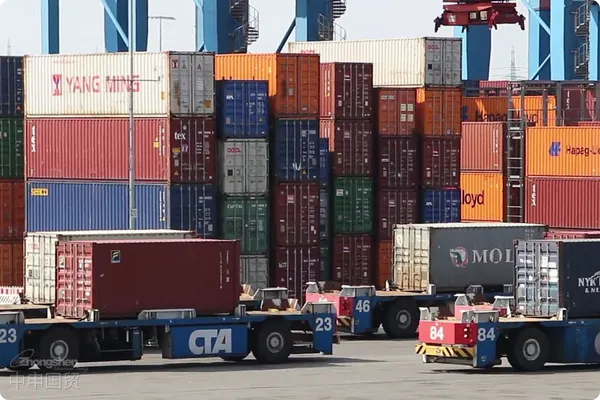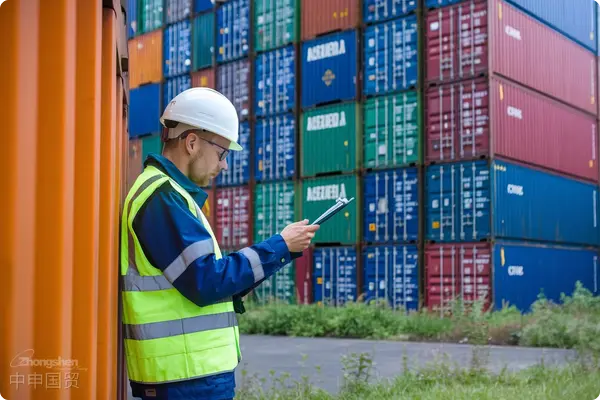- Shanghai Zhongshen International Trade Co., Ltd. - Two decades of trade agency expertise.
- Service Hotline: 139 1787 2118

Recently, the Shanghai Export Containerized Freight Index (European Route) released by the Shanghai Shipping Exchange showed that on March 25 this year, the index stood at 2153.34 points, soaring to 6318.1 points by July 22, marking a staggering 193% increase in just four months. This significant surge not only reflects the extreme volatility in the global shipping market but also demonstrates the resilience and innovation capabilities of Chinese enterprises in navigating complex trade environments. Unlike previous short-term spikes caused by black swan events such as the Red Sea crisis, this freight rate increase exhibits sustained and continuous characteristics.
Lin Yikun, Deputy Secretary-General of the Shipping and Logistics Branch of the China Communications and Transportation Association, pointed out that companies may now face a high adjustment in container freight rates, soaring from $2,000 per container to $8,000. If companies still fulfill contracts at the original rate of $2,000 per container, they would incur a substantial loss of $6,000 per container. Such a sharp rise in freight rates has severely impacted the profits and operations of export-oriented enterprises, forcing them to seek effective risk management tools to cope with this volatility.
Container Freight Index (European Route) futures, as an emerging financial derivative, are gradually becoming a crucial tool for companies to hedge against freight rate risks. These futures, based on the Shanghai Export Containerized Freight Index (European Route), accurately reflect freight rate changes in the China-Europe container export market, providing transparent price references. This not only enables market participants to promptly grasp shipping market fluctuations but also offers effective hedging tools for physical enterprises.
As the most innovative futures product in Chinas futures market in recent years, the Container Freight Index (European Route) futures were launched in August 2023 on the Shanghai International Energy Exchange, a wholly-owned subsidiary of the Shanghai Futures Exchange. It became the worlds first shipping futures product developed based on a Chinese index and is open to international investors. According to data from the China Futures Association, in the first three quarters of this year, trading volume and turnover of Container Freight Index (European Route) futures were exceptionally active, with cumulative trading volume reaching 15.726 million contracts—6.3 times that of over 200 contracts from four major overseas exchanges—and cumulative turnover hitting 2,191.4 billion yuan, with an average daily turnover of 12.1 billion yuan. These figures fully demonstrate the significant position and widespread recognition of Container Freight Index futures in the market.
The active trading of Container Freight Index (European Route) futures is closely tied to the continuous rise in freight rates for European routes. In recent years, escalating conflicts in the Middle East have obstructed ship passage through the Red Sea, further driving up shipping prices to Europe. Transportation bottlenecks and soaring freight costs have sharply increased corporate demand for Container Freight Index futures, as companies seek to mitigate financial pressures from freight rate volatility through hedging.
A case from an international supply chain company in Tianjin is particularly illustrative. In early June this year, the company received an order from aforeign tradecargo owner requesting freight services for the Asia-Europe route, involving five containers with a shipment deadline set for late July and a maximum freight rate of $6,500 per container. Based on market trends, the company anticipated that by late July, container freight rates might rise to $8,000. If they fulfilled the contract at $2,000 per container, they would face a net loss of $1,500 per container. To avoid this loss, the company purchased call options on Container Freight Index (European Route) futures in early June. As expected, by late July, container prices had indeed risen to $8,500. However, thanks to their hedging strategy in the futures market, the company successfully reduced losses caused by the freight rate surge.
Huang Wei, head of the Futures Derivatives Department at the Shanghai Futures Exchange, noted that 90% of Chinas exports relyMaritime Transportationon shipping, and China holds seven of the top ten spots in global container throughput. Container Freight Index futures provide these companies with effective tools to manage freight rate volatility, helping them maintain competitiveness in the complex and ever-changing international trade environment.
As global economic uncertainties grow, challenges in the shipping market continue to intensify. Geopolitical tensions, rising trade protectionism, and frequent unforeseen events have made shipping freight rates more volatile. In this context, the role of Container Freight Index futures has become increasingly prominent. By offering mechanisms for price locking and risk hedging, these futures not only help stabilize corporate operations but also promote deeper integration between financial markets and the real economy.
Moreover, the successful launch of Container Freight Index futures has injected new vitality into the global shipping derivatives market. As the first shipping futures product developed based on a Chinese index, Container Freight Index (European Route) futures not only meet the needs of domestic enterprises but also attract significant participation from international investors. This innovative financial tool enhances transparency and efficiency in the shipping market, driving further development of the global shipping finance market.
Despite the notable success of Container Freight Index futures in the market, their future development still faces numerous challenges. First, the ongoing turbulence in the global shipping market requires financial instruments with greater adaptability and flexibility. Second, changes in regulatory environments may also impact the functioning of the futures market. Therefore, the Shanghai Futures Exchange must continuously optimize product design and strengthen market supervision to ensure Container Freight Index futures continue to play a vital role in risk management.
Overall, the sustained rise in the Shanghai Export Containerized Freight Index (European Route) and the active trading of Container Freight Index futures mark the maturity and innovation of Chinas shipping finance market. As more companies recognize the value of financial derivatives in risk management, Container Freight Index futures are poised to play an even greater role in the future, helping Chinese enterprises advance steadily in global trade.
In todays increasingly complex global trade environment, Container Freight Index futures provide Chinese export enterprises with powerful tools to tackle the challenges of shipping freight rate volatility. Through effective risk management, companies can not only stabilize profits but also maintain a leading position in the fiercely competitive international market. Looking ahead, with continuous financial innovation, more such derivatives are expected to emerge, offering robust support for the stability and development of global trade.
Related Recommendations
? 2025. All Rights Reserved. 滬ICP備2023007705號(hào)-2  PSB Record: Shanghai No.31011502009912
PSB Record: Shanghai No.31011502009912









